How Long Does It Take to Learn Wing Foiling?
- Posted on
- By Ryan "Rygo" Goloversic
- 0
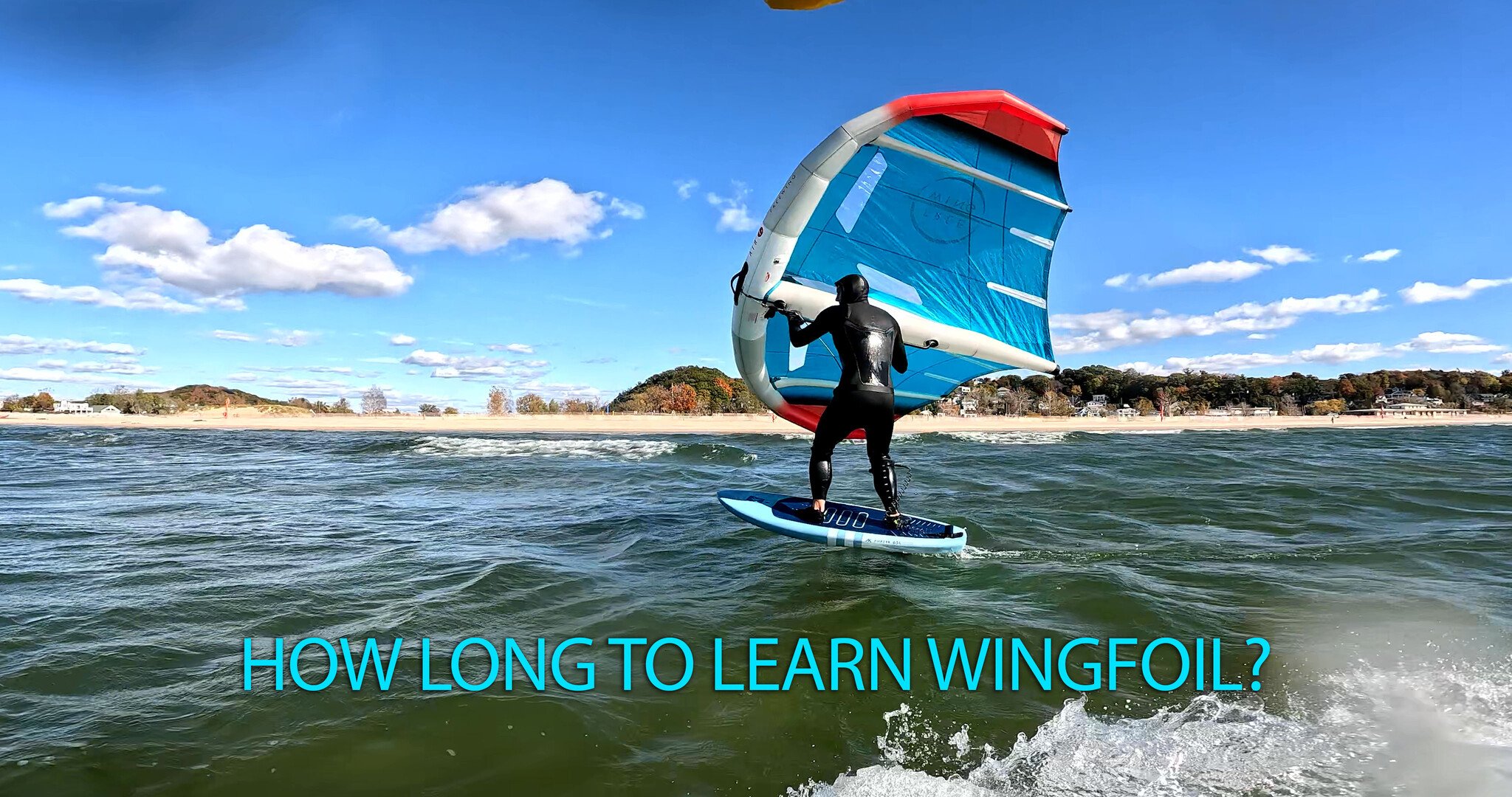
How Long Does It Take to Learn Wing Foiling?
Wing foiling is the hottest new wind sport, and we’re stoked to see how many new people have come into the tribe. It wasn’t that long ago that we were learning ourselves, albeit on earlier gear that wasn’t as refined. One common question among beginners is: how long does it actually take to learn how to wingfoil? The good news is that you can now learn faster than ever with the new advances in gear. Wings are more balanced, but boards, in particular, have better shapes that will make the difference.
In this article, we’ll explain what you can expect in your first sessions, key factors that influence progress and some tips for getting comfortable with wing foiling faster.
How Long Does It Take to Learn Wing Foiling?
Wing foiling is the hottest new wind sport, and we’re stoked to see how many new people have come into the tribe. It wasn’t that long ago that we were learning ourselves, albeit on earlier gear that wasn’t as refined. One common question among beginners is: how long does it actually take to learn how to wingfoil? The good news is that you can now learn faster than ever with the new advances in gear. Wings are more balanced, but boards, in particular, have better shapes that will make the difference.
In this article, we’ll explain what you can expect in your first sessions, key factors that influence progress and some tips for getting comfortable with wing foiling faster.
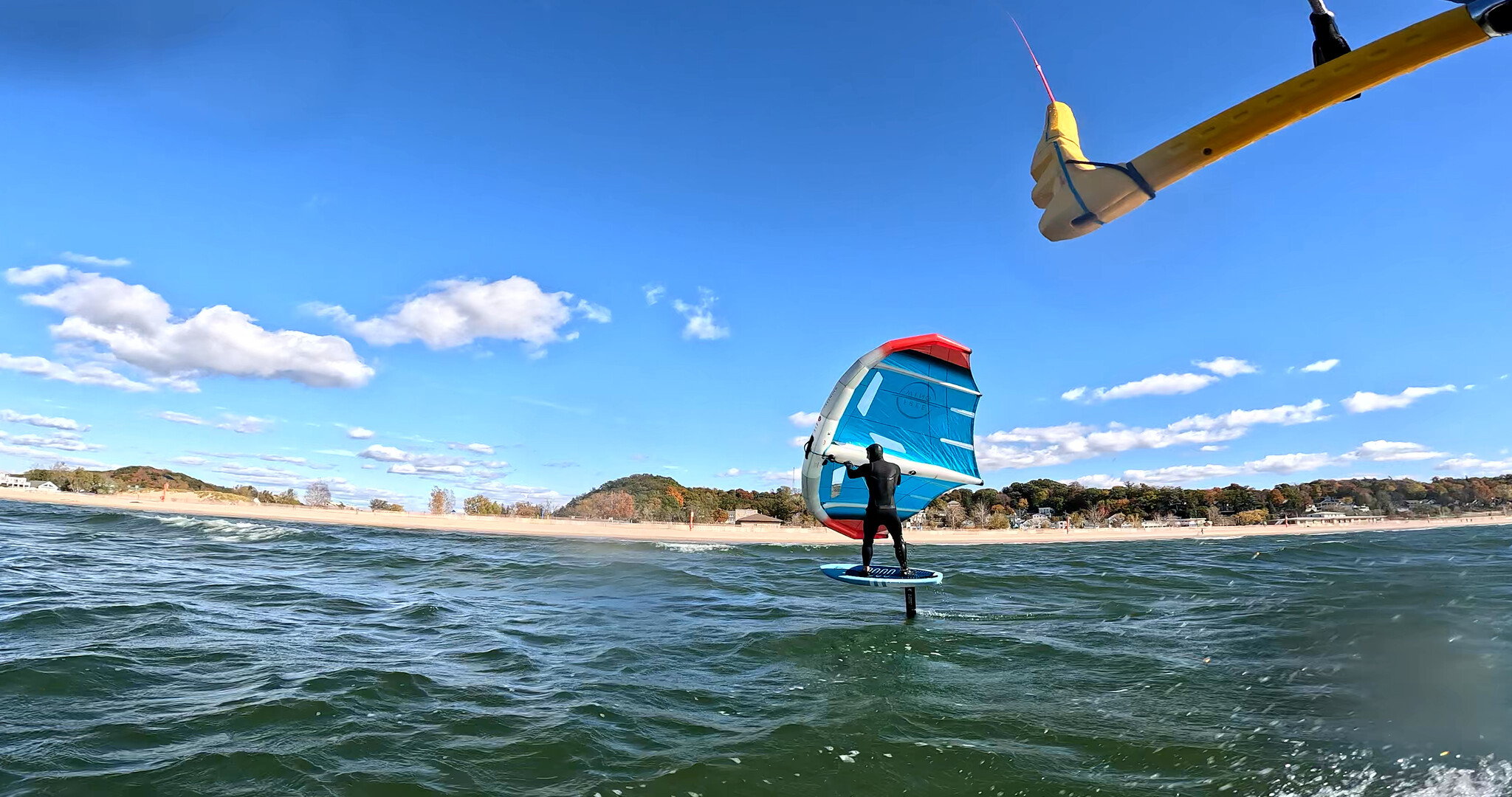
How Many Sessions to Learn Wing Foiling?
We have good news and bad news. The good news is you will be riding back and forth quickly! Maybe even your first session if you have a large board and flat water. The bad news is it will take longer to get up on the foil.
Consistency matters: The time it takes to learn wing foiling varies for each person, but consistency plays a huge role. For one of us, things started to click around session six, while the other picked it up by session three or four. If you can get out consistently, say a few times a week, you could be cruising by the end of a good month of practice.
On average, beginners find their footing between three to eight sessions—especially if they can keep up a regular schedule and favorable conditions.
If you can practice regularly, you’ll build muscle memory and gradually get more comfortable with each session. It’s not just about spending hours on the water; it’s the frequency of sessions. Even a few consistent sessions can make a big difference.
For those who are inconsistent, progress may take longer. Gaps in practice make it harder to retain what you learned and pick up where you left off. We found that practicing on flat water with manageable wind helped us progress much faster once we started going out more regularly.
Conditions matter too: If you live on the ocean, you will have to deal with chop or a shore break. This is going to make learning very difficult. We advise you to find somewhere with smoother water to learn. Kelly Park in Cocoa Beach is a great place to start; the Stuart Causeway is another popular destination from the south and also has calmer conditions to learn. Another excellent beginner location is Jacque’s Beach, located off the 528. Driving towards Port Canaveral, you’ll see the last pull-off eastbound. This is a popular wingsurf destination and a great place to start if you’re based in Florida. If you live near a jetty, that is an ideal place to learn. You should avoid waves and excessively choppy locations.
Does Prior Foiling Experience Help with wingfoil?
A common question is whether previous experience in other foil sports, like kite foiling, is helpful when learning wing foiling. The answer is yes and no. If you’re already familiar with kite or wake foiling, you may find wing foiling a bit easier since you’ll already understand how to control the foil. You still need to learn wing management and how to control the wingboard. You’ll have to build muscle memory to properly transfer energy from the wing into the foil and, most importantly, how to balance. A lot of control is needed to use the wing to hold yourself up and balance the board. Once you get passed this stage, your previous foil skills will help immensely.
Learn with the wing on the beach! However, even without prior foiling experience, wing handling can be picked up quickly and help you get comfortable with the wing, even before you master foiling. The sport gets much easier after you learn how to fly the wing.
Is Wing Foiling Hard? The Beginner's Learning Curve
Learning wing foiling isn’t as complicated as it may seem, but it’s essential to approach it with patience. For experienced kiteboarders like us, going back to being a beginner in a new wind sport was both exciting and humbling. The wing itself is entirely different—there’s no control bar or lines, and the handling relies on direct arm movements.
The hardest part initially was building muscle memory with the wing. At first, we struggled to balance on the board and control the wing without getting thrown off by gusts. But after a few sessions, it started coming together as we learned how to power, depower the wing, and keep our balance.
Pro Tip: Holding the wing above your head can give you a bit of upward lift, making it easier to balance and stay on the board.
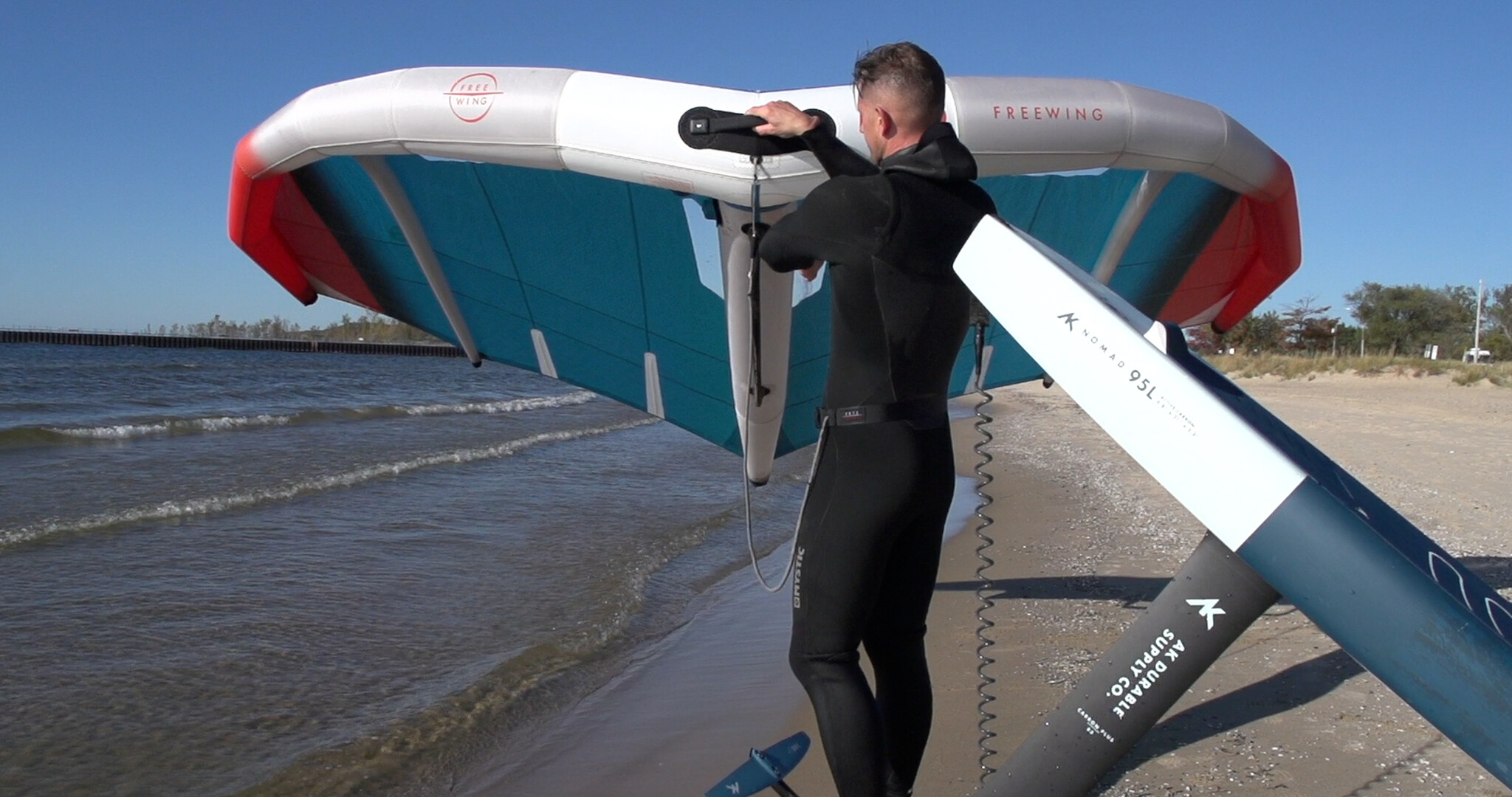
Tips for Getting Started: Learning the Basics of Wing Control
- Start on Land: Before hitting the water, practice on the beach. Understanding how to hold and maneuver the wing without causing any damage to yourself or the wing is essential.
- Use a Stable Board: Many beginners start on a paddleboard or an inflatable board before adding a foil. This allows you to focus on wing control before worrying about balance on a foil. We recommend a 140 L beginner wingboard like the Ak Durable Supply Co. Phazer.
- Gradual Progression: Use small steps. Once you feel steady handling the wing, move to a larger board on calm water, and then gradually work your way up to foiling. Getting comfortable with wing handling on the water will help you build confidence for the next step.
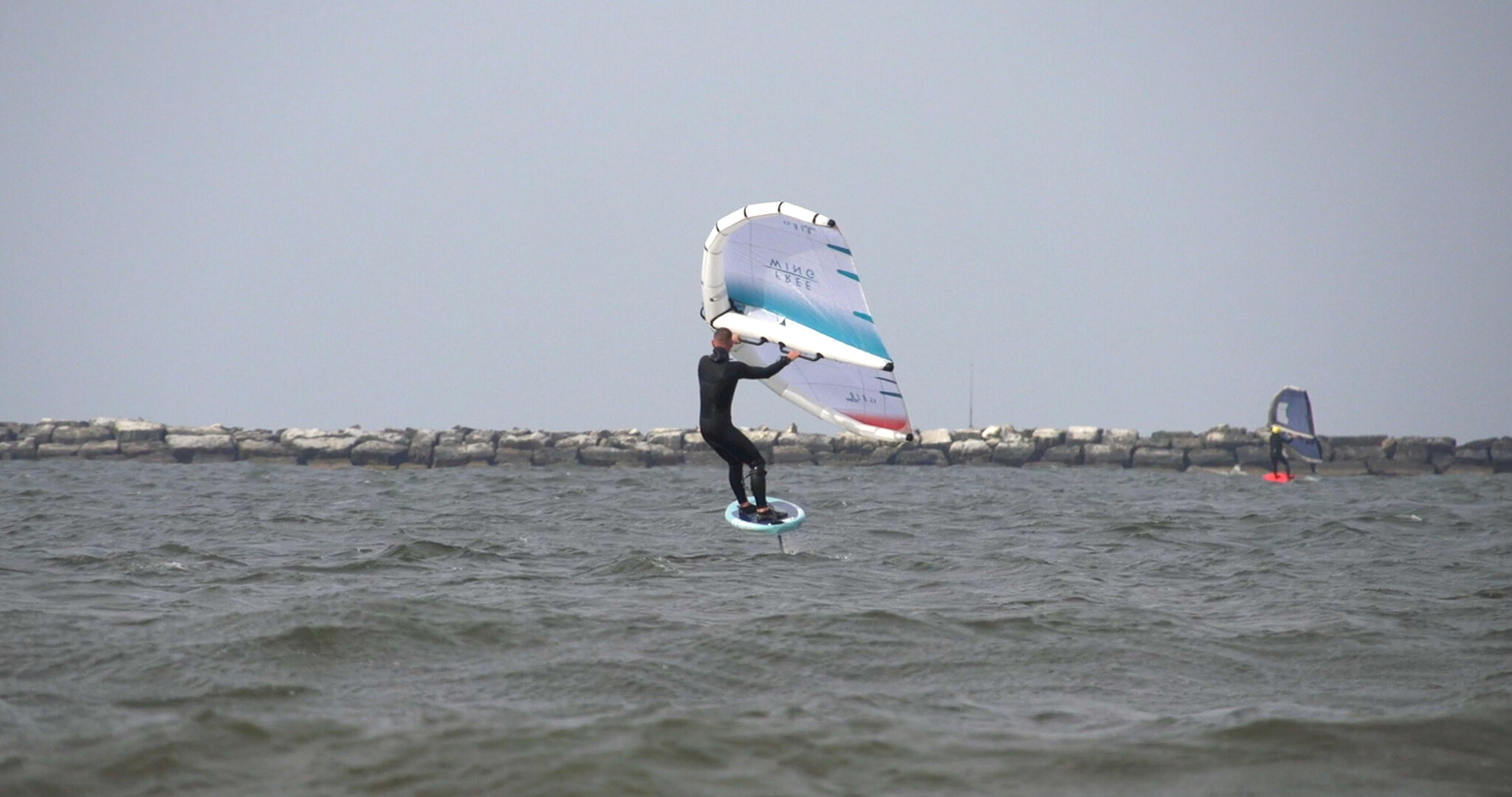
Conditions Matter: How Wind and Water Conditions Affect Learning
Ideal conditions can make the learning process much smoother. For beginners, we recommend aiming for around 13-18 knots of steady wind and flat water. Choppy or wavy conditions can add to the challenge and make focusing on wing handling and balance harder.
Remember, there are different skill sets for various wind conditions—just like kitesurfing, learning to handle light, moderate, and strong winds presents unique challenges. Start with moderate conditions and move to more challenging ones as you progress. Light wind wingfoiling, for example, can be tricky!
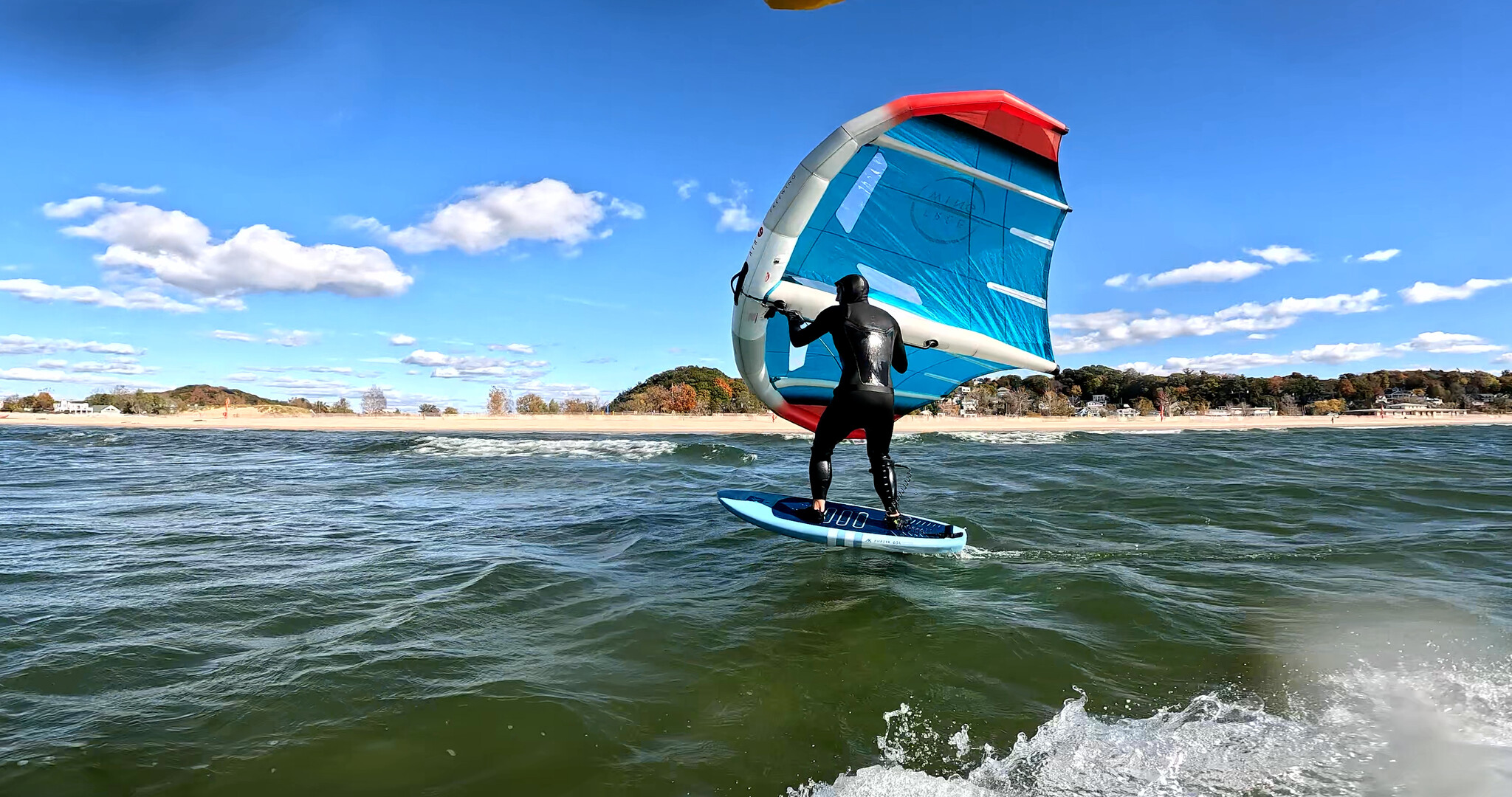
Do I need lessons to learn wingfoil?
Lessons or DIY Learning? Lessons are recommended for many reasons. Especially if you want to learn fast, wing foiling is one of the few wind sports you can learn without a formal lesson, especially if you have some background in other wind or water sports.
Taking a lesson or watching instructional videos can fast-track your progress. A few pointers from an instructor can be beneficial for understanding wing handling and basic wing techniques. They can also help prevent any bad habits that might hold you back for months or years.
Fun Fact: You can even practice wing handling on land with a skateboard, snowboard, or ice skates! Just get a feel for how the wing moves before you hit the water.
Our Final Thoughts on Learning Wing Foiling
The time it takes to learn wing foiling depends on your previous experience, consistency, and the conditions you’re practicing in. But with a few solid sessions and patience, most people find they can get up and ride competently within a month.
Remember, learning any new sport comes with its highs and lows. One session might feel amazing, while the next might be frustrating due to different conditions. Just stick with it, keep having fun, and before you know it, you’ll be comfortable cruising and tackling new challenges on your wing foil.
If you have any questions, call, or email us.
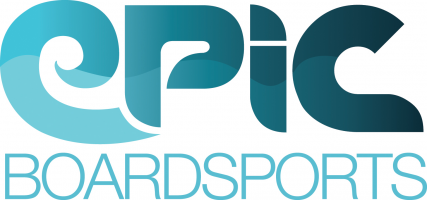
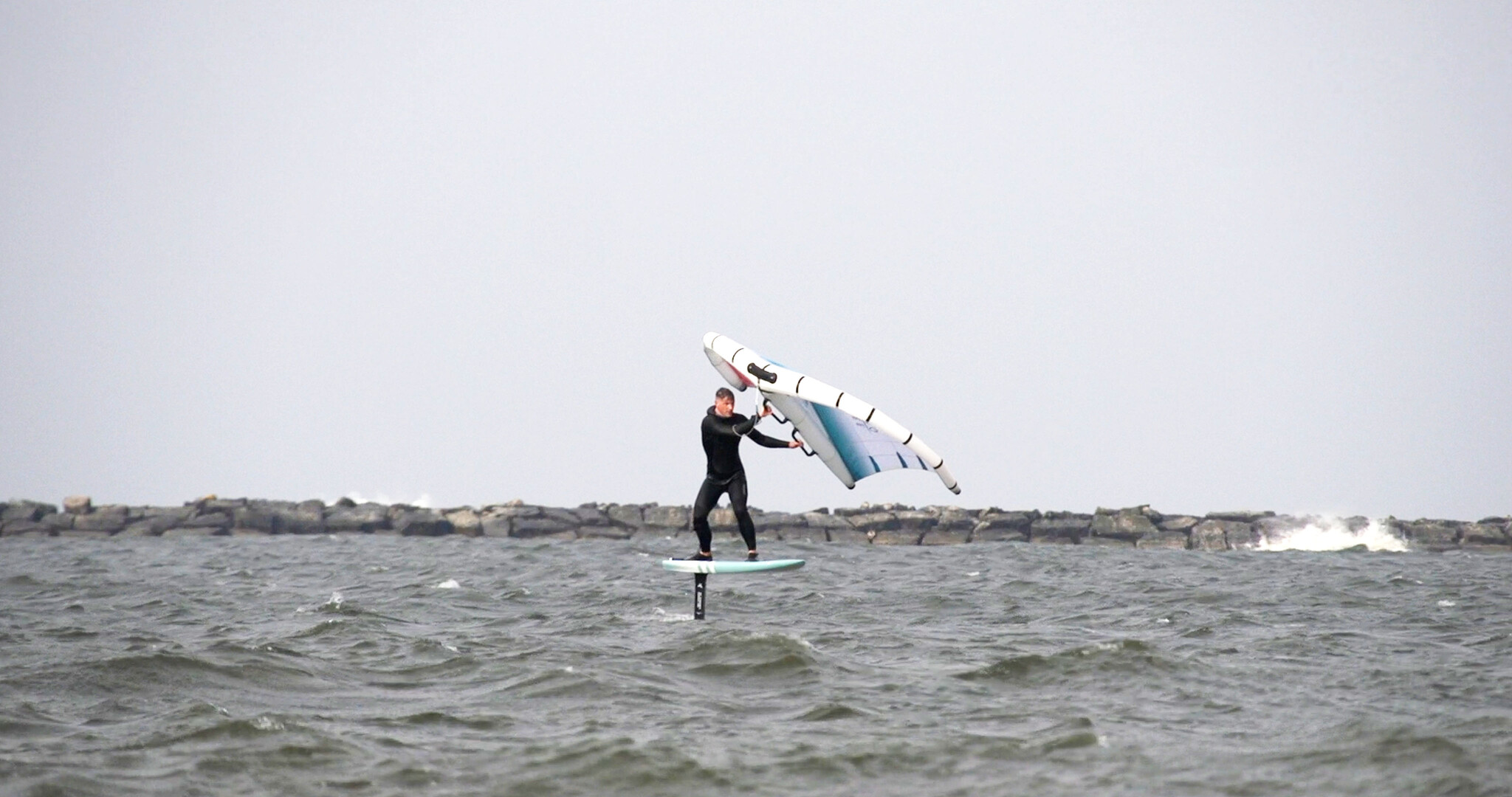

Comments
Be the first to comment...